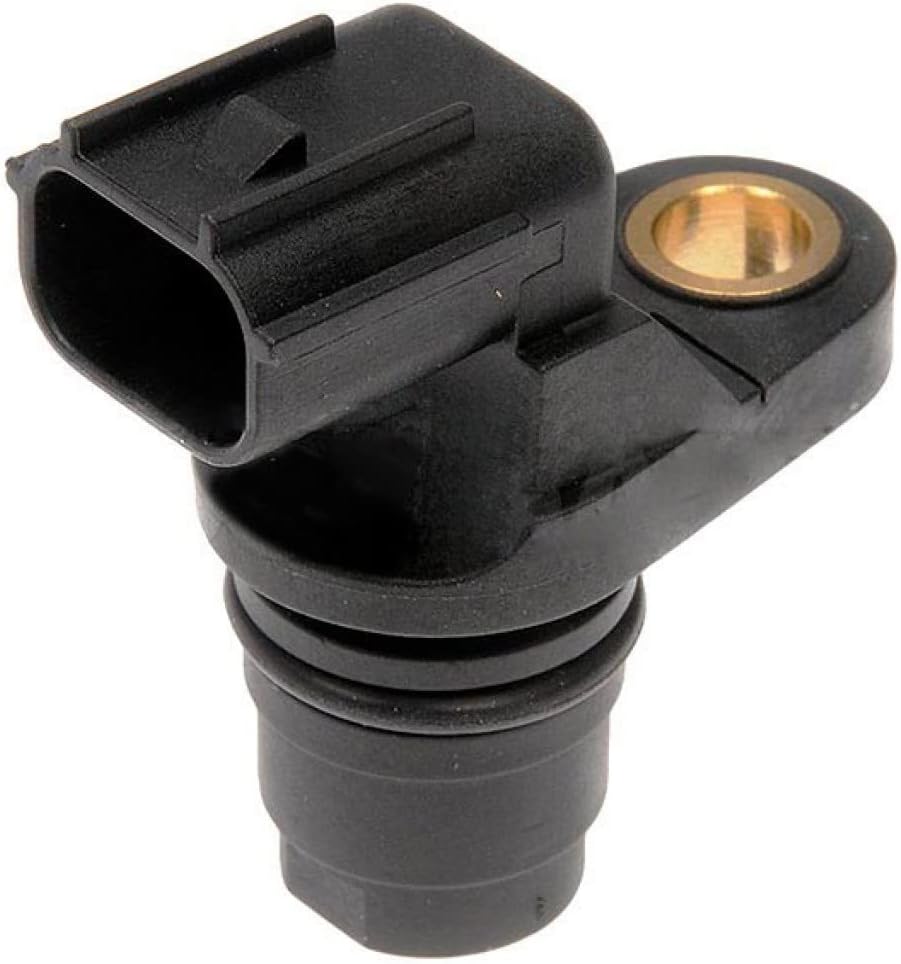2008 Honda Accord Camshaft Position Sensor

The 2008 Honda Accord, a mainstay of the mid-size sedan market, relies heavily on its various sensors for optimal engine performance and fuel efficiency. Among these critical components is the camshaft position sensor (CMP). This article delves into the technical specifics of the 2008 Accord's CMP sensor, explores the engineering considerations behind its design, examines its real-world performance, compares it with alternatives, discusses reliability and maintenance, and considers its place in the broader automotive landscape.
Technical Specifications and Engineering Choices
The 2008 Honda Accord predominantly utilized a Hall-effect sensor for its CMP function. This type of sensor operates by detecting changes in a magnetic field. A rotating toothed wheel (reluctor wheel) is attached to the camshaft. As the teeth pass the sensor, they interrupt a magnetic field, generating a pulsed voltage signal. The engine control unit (ECU) interprets the frequency and pattern of these pulses to determine the camshaft's precise position. Specific resistance values will vary, but an important check is for signal integrity, which can be done with an oscilloscope looking for a clean square wave signal. The voltage range typically sits between 0V and 5V.
Honda's engineering choice of a Hall-effect sensor offered several advantages. Hall-effect sensors are known for their robustness and resistance to environmental factors like temperature fluctuations and vibration. Their solid-state design contributes to increased reliability compared to older, mechanical sensor types. Moreover, the Hall-effect sensor provides a distinct on/off signal, simplifying signal processing by the ECU. The placement of the CMP sensor is usually near the top of the engine or the side of the engine block near a camshaft. The specific location varies slightly based on engine configuration (I4 vs V6). Accuracy is paramount in this application.
Real-World Performance and Alternatives
In the 2008 Accord, the CMP sensor's primary function is to provide the ECU with crucial information for precise fuel injection timing and ignition timing. This data is essential for achieving optimal combustion, maximizing fuel efficiency, and minimizing emissions. A faulty CMP sensor can lead to a range of performance issues, including hard starting, rough idling, reduced power, poor fuel economy, and even engine stalling. In more severe cases, the engine may enter a limp mode to prevent further damage.
While Hall-effect sensors were the standard for the 2008 Accord, alternative technologies exist, such as variable reluctance sensors (VRS). VRS sensors also rely on a rotating toothed wheel but generate an AC voltage signal based on the rate of change in the magnetic field. While VRS sensors are generally more cost-effective, they are more susceptible to noise and require a minimum rotational speed to generate a reliable signal, making them less suitable for low-speed operation or starting conditions.
Pros of Hall-effect CMP Sensor (2008 Accord):
- High reliability and durability.
- Immunity to noise and environmental factors.
- Accurate signal at low engine speeds.
- Clear on/off signal for easy ECU interpretation.
Cons of Hall-effect CMP Sensor (2008 Accord):
- Generally more expensive than VRS sensors.
- May be more sensitive to extreme heat over extended periods.
Reliability and Maintenance
The CMP sensor in the 2008 Accord is generally reliable, but failures can occur due to factors such as thermal stress, vibration, and contamination from oil leaks. Regular maintenance is key to preventing premature failure. This includes:
- Visual inspection of the sensor and wiring harness for damage or corrosion.
- Checking the sensor's electrical connections for proper contact.
- Ensuring that the engine is free from oil leaks that could contaminate the sensor.
- Using a scan tool to monitor the CMP sensor signal for any abnormalities.
When replacing a CMP sensor, it's crucial to use a high-quality OEM or reputable aftermarket replacement. Cheaper, lower-quality sensors may not meet the OEM specifications and could lead to performance problems or premature failure. Always ensure the replacement sensor is properly installed and torqued to the manufacturer's specifications. Use a diagnostic scan tool to clear any diagnostic trouble codes (DTCs) and verify proper sensor operation.
Future Trends
The automotive industry is constantly evolving, and sensor technology is no exception. Future trends in CMP sensor technology include:
- Miniaturization: Smaller, more compact sensors that can be integrated more easily into engine designs.
- Improved Accuracy: Higher-resolution sensors that provide even more precise camshaft position information.
- Integrated Diagnostics: Sensors with built-in diagnostic capabilities that can detect and report potential issues before they lead to major problems.
- Wireless Communication: Sensors that can communicate wirelessly with the ECU, eliminating the need for physical wiring.
Furthermore, as engine designs become more complex with variable valve timing and lift systems, the demands on CMP sensors will increase. The ability to accurately and reliably track camshaft position will be even more critical for optimizing engine performance and meeting increasingly stringent emissions standards.
Conclusion
The 2008 Honda Accord's camshaft position sensor plays a vital role in ensuring optimal engine performance and fuel efficiency. Understanding the technical specifications, engineering choices, and real-world performance of this sensor is essential for automotive professionals. By following proper maintenance procedures and staying abreast of future trends in sensor technology, technicians can effectively diagnose and repair CMP sensor-related issues, ensuring the continued reliability and performance of the 2008 Honda Accord and other vehicles. The drive for greater efficiency, reduced emissions, and improved engine control will continue to push innovation in CMP sensor technology, making it an area of ongoing importance for the automotive industry. The integration of advanced sensing technologies is not merely about incremental improvements, but a fundamental shift towards intelligent, self-diagnosing, and self-optimizing vehicles.
